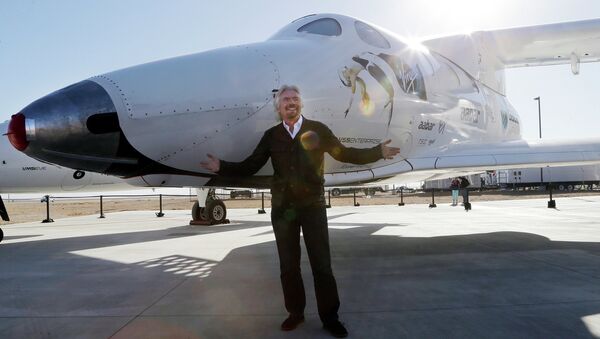VSS Unity is a part of the SpaceShipTwo class of spaceplanes designed by Virgin Galactic's Spaceship Company to be dropped from a mothership, the WhiteKnightTwo. WhiteKnightTwo carries the plane up into the air before it's released, when the Unity uses its rocket propulsion to shoot itself up to the Karman line, just shy of the very edge of space at 100 km above Earth's surface.
Unity only reaches heights of about 80 km, but it's still enough to very easily view our planet's curvature.
SpaceShipTwo's other spaceplane, the VSS Enterprise, was instead built by Scaled Composites, but it crashed in a test flight in October 2014, killing one of its pilots and seriously injuring another.
— Virgin Galactic (@virgingalactic) October 31, 2014
Enterprise was designed to fly along the Karman line. Unity, which "incorporates the additional safety mechanisms adopted after the 2014 VSS Enterprise test flight accident," according to a press release, is much heavier and is not designed to reach quite those heights.
VSS Unity went through more than a year of testing prior to today's test flight, which included seven glide tests, Sputnik reported. Unity also broke the sound barrier for the first time in today's test flight, reaching a speed of Mach 1.87, or about 1,434 mph.
WhiteKnightTwo launched from Mojave in the morning and carried Unity up to an altitude of 6,500 feet over the Sierra Nevada Mountains. Once released from the mothership, Unity's pilots aimed the spaceship upwards for an 80 degree blast toward the sky. Unity used its rocket propulsion for a full 30 seconds before eventually gliding back down to the Mojave desert, making a smooth runway landing.
The flight generated "valuable data on flight, motor and vehicle performance," which Virgin Galactic's engineers are now studying. The next phase of testing is also now ready to commence, which will expand the duration of the rocket burns to their full potential under the design.


